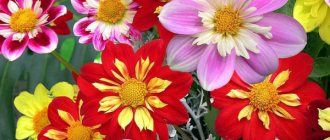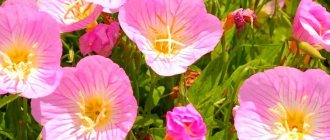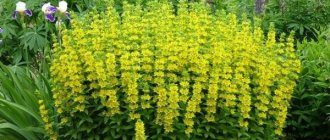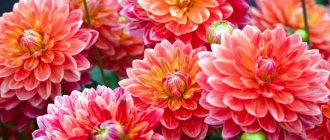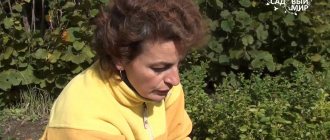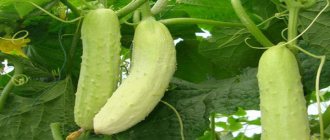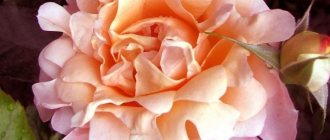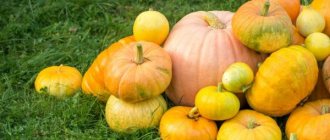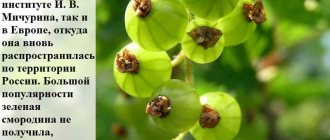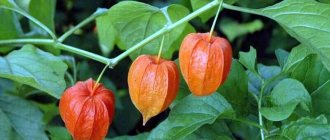Popular varieties of dahlias
Annual varieties of dahlias can be from 25 cm to one meter in height. They begin to bloom much earlier than their perennial relatives. There are a great many varieties of this flower.
Funny boys
Merry Guys
Perhaps the most famous variety is “Merry Guys”. This variety grows up to half a meter. The plant is very branchy. It blooms continuously all summer with colorful multi-colored flat flowers about 10 cm in diameter.
Cactus mixture
Cactus mixture
This variety is slightly taller than “Jolly Guys”, reaching 60 cm in height. And the edges of its petals are curled and resemble cactus needles. The flower itself is also somewhat larger, reaching 12-13 cm in diameter and double. The colors are very varied.
Figaro
Figaro Violet
This variety is a low bush, no more than 40 cm high, but very grown in width. And it is a kind of blooming ball, consisting of flowers with a diameter of 5 to 80 cm. The color of the petals is very diverse: white and yellow, orange and pink, red and burgundy.
The plant is perfect for growing in large vases and containers. Looks great in flower beds and individual colorful bushes and on a balcony or terrace.
Piccolo
Piccolo
Piccolo is very similar to “Jolly Guys”, only the bush is slightly lower and the flowers are smaller. This variety can be grown in balcony boxes and flowerpots. The plant can be formed by pinching into a neat flowering bush.
Minion
Mignon Sunshine
A very beautiful miniature variety. The height of the bush reaches only 40 cm. The plant is very branched and produces many shoots. And in July they already bear inflorescences that are quite large for such a baby, about 9 cm in diameter. The flower is simple, not double, the petals are arranged in one row. The color of the petals can be very diverse: white, red, pink, yellow.
Dahlia collared Dandy
Dandy
This variety is slightly taller than the others, about 50 cm in height. The bush looks original in a group and as a separate plant. This variety has an interesting inflorescence structure. The inner row of petals is somewhat smaller than the outer one and seems to be raised like a collar. They look simply amazing. Such flowers are good in a bouquet. The coloring is very diverse. The collar is often of a contrasting color, which looks very decorative.
Content
- 1. How to grow annual dahlias by planting seeds in open ground? 1.1. Time for sowing seeds of annual dahlias
- 1.2. Caring for dahlia seedlings in open ground
- 2.1. Annual dahlia: planting and caring for young seedlings
- 4.1. 'Bambino'
Annual varieties of dahlias are no less popular than perennials. They have their fans among flower growers due to the following qualities :
- they bloom early and intensely, while perennials may not bloom at all in the first year;
- Their flowering is long and uniform until frost;
- there is no need to dig up, process and store tubers until the next season;
- planting and caring for annual dahlias, such as, for example, 'Jolly Guys' , is not difficult even for novice gardeners;
- These flowers grow everywhere, including in the northern regions.
Before growing annual dahlias, you need to choose the right varieties. They may differ :
- height of the bush (from dwarf to tall, requiring support);
- size, shape and color of buds;
- timing of flowering (tall varieties bloom somewhat later).
How to care for a specific dahlia variety is usually written on the back of the seed packet. Most often, this information is quite enough to understand the basics of growing dahlias of this particular variety.
Mixes selected from similar varieties of different colors often appear on sale. You can buy them with confidence! Mixtures are specially selected in such a way that their flowering time and the rules for caring for the varieties included in them coincide.
When to sow dahlias for seedlings
It takes about two to two and a half months from germination to flowering, therefore, seedlings should be planted in early April. This time is enough for strong seedlings to grow.
It is not recommended to sow seeds before April, as the seedlings will need additional lighting. This is a recommendation for the Central regions of the country, the Moscow region, the Urals and Siberia. If you live further south and it’s already warm in March, then please make allowances for your area.
How to grow dahlia seedlings at home
The seeds are quite large, so sowing them will not be difficult. You just need to prepare the appropriate container so that the plants are not crowded.
Preparing soil and containers
The soil for growing dahlia seedlings must be fertile so that it allows water and air to pass through well. An excellent solution would be a mixture consisting of garden soil, sand and humus, taken in equal quantities. The soil should be neutral or slightly acidic.
Before use, the soil must be disinfected - calcined in the oven or spilled with a solution of potassium permanganate. The container must also be treated first with boiling water and then with a pink solution of potassium permanganate.
Ampelous petunia: growing from seeds at home
Selection of seeds and preparation for sowing
Having decided on the plant variety, the seeds need to be prepared. They can be soaked for 15 minutes in a fungicide solution; a one percent manganese solution is suitable. Then soak in a growth stimulator, Epin, aloe juice with water or Zircon will do. After preparation, the seeds can be sown in the ground.
Sowing dahlias
The prepared soil is placed in prepared containers, moistened and the seeds are planted at a distance of 3 cm from each other in a checkerboard pattern. The seeds are lightly sprinkled with calcined river sand on top. This will help the sprouts hatch better and prevent blackleg disease from developing.
The plantings are covered with glass or film and placed on a heating radiator. The greenhouse is ventilated daily. In about a week or a little more, the first shoots will appear. The shelter is removed, the seedlings themselves are placed on the windowsill.
Features of the view
Dahlias are distinguished by their bright colors; they can be double or semi-double. The most common flowers are spherical, pom-pom, simple, collar-shaped or cactus-shaped.
Characteristics of annual dahlias:
- plant height 35–120 cm;
- flower diameter – up to 12 cm;
- up to 15 buds can form on each shoot;
- Flowering begins in June-July and continues until frost.
To understand which species are best to plant, novice gardeners try to understand the plant varieties. Information about the types of annual dahlias with names will help.
Funny boys
The most common variety is the Merry Guys variety. These are dwarf annual dahlias that are easy to grow. The color of flower petals is yellow, burgundy, cream, and green.
Pompom Mix
A popular large species is Pom Pom Mix. The plants reach a height of 120 cm; more than 10 flowers are simultaneously formed on the stems. They are most often grown for the purpose of further cutting.
Figaro
The dwarf Figaro variety is grown along borders. It is distinguished by early flowering and rich color of flowers.
Seedling care
Dahlia seedlings do not require any special care. It's all about providing heat, light and watering.
Temperature and lighting
If you place the seedlings on a windowsill on the south side, then the April sun is quite enough for its needs, but the air temperature should be at least 22°C. If there is still little lighting, you need to provide the seedlings with additional light.
Watering and fertilizing
Watering for seedlings needs moderate. You shouldn’t get carried away with feeding either, but you shouldn’t ignore them either. After picking the seedlings, about a week later, you need to feed the Dahlia with fertilizer containing nitrogen and potassium. After 7-10 days, fertilizing should be repeated. Then you need to add fertilizers containing calcium and magnesium.
Important! Tall varieties of dahlias are initially fed only with nitrogenous fertilizers, and then with complex fertilizers.
Picking
When 2-3 leaves are formed, approximately two weeks after germination, the seedlings must be pruned. Otherwise, the seedlings will stretch upward, the root system will develop poorly and you won’t get a beautiful, strong bush.
It is best to pick seedlings in separate small containers, about 12 cm high, but you can also put them in a box of the same height, but the distance between plants needs to be 5-7 cm. After the dahlias have been picked, they need to be put in the shade for a couple of days with a lower temperature. This way the stress you will experience will be less.
When to plant marigold seedlings
How to pick dahlia seedlings - video
Planting dahlia seedlings in open ground
When the threat of return frosts has passed, dahlias can be planted in a permanent location.
It should be taken into account that these flowers prefer loose, slightly acidic soil.
A prerequisite for the soil is good drainage so that there is no stagnation of moisture. The place should be sunny. They, of course, can tolerate shade, but the flowering will be weak, and the elongated bush will be unattractive. So it is better not to plant dahlias near trees, buildings and lush shrubs.
- Holes are made in the prepared bed so that the root of the plant can freely fit.
- Add a handful of ash and a little humus to each hole, moisten and plant dahlias.
- In order not to injure the root when removing it from the container, the seedlings must be thoroughly watered and allowed to soak in the soil, so the plant can be easily removed. If peat pots were used, then seedlings are planted along with the pots. The plant should be buried down to the first cotyledon leaves.
- The distance between holes should be from 30 to 50 cm for short and compact species. For tall varieties, the distance between holes should be increased to 80 cm.
Important! The soil around the plant must be mulched. This will protect you from weeds and fungal diseases. It will also serve as additional warmth for the roots.
After the seedlings are planted in open ground, they must be shaded for better rooting. After 3-4 days, the cover is removed.
How to plant lobelia seedlings correctly
Pinching annual dahlias: step-by-step instructions
Pinching dahlias
Most gardeners carry out this procedure as pinching. Beginner gardeners always have a question: do annual dahlias need to be pinched and why do it at all? This operation, as a rule, is required for flowers, but only for medium-sized and tall ones, and of all types. But for dwarfs this procedure is not required.
Among the advantages, it stands out that pinching allows you to make the plant more neat in appearance, and the size of the flowers is larger. In addition, the energy of the dahlia will thus be preserved to create a good and strong tuber.
Pinching of flowers is carried out some time after the shoots appear and eight true leaves grow. The top of the flower is removed using sharp scissors or pruners. As a result, the bush gets a beautiful and lush shape. Buds also appear on the side shoots, which means the plant becomes more lush.
When a gardener works with annual crops, he needs to ensure that the power of the dahlia is directed specifically at flowering. So carefully inspect the bushes and find places where there is too much foliage. It must be removed so that the plantings are better ventilated. There is no need to be greedy and leave a lot of shoots. If the bush is too thick, it may become infected with fungus or begin to rot.
Diseases and pests
The most common diseases that affect dahlias are:
- Botris, Gray Rot;
- White rot;
- Fusarium.
Botrytis, or gray rot - brown spots appear on the leaves, then the leaves gradually dry out and fall off. All parts of the plant are affected, the buds do not open, and the plant dries out. The reason for the development of this disease is high humidity, so most often it occurs in spring or autumn when the weather changes. Deep necrosis forms on the tubers; such tubers rot during storage
By the appearance of brown spots on the leaves, which subsequently dry out and fall off. As the disease grows, it affects large areas of the plant, and it is determined that the dahlia is affected by rot. Fusarium develops in the root system. These diseases cannot be treated. Sick individuals should be disposed of to prevent the disease from spreading further. For prevention purposes, you need to select the right soil, without stagnant water. You also need to be careful with watering, not to overdo it.
Among the pests that annual dahlias can choose:
- Aphid;
- Slugs;
- Bedbugs.
If uninvited guests are detected, the plant should be treated with insecticides. With slugs, they provide an effective method: sawdust, scattered between the plants, will injure the delicate body of the slugs, and they will leave the garden bed.
Why do the leaves of annual dahlia seedlings curl?
Dahlia leaves curl
Sometimes gardeners have to watch how annual dahlias begin to curl their leaves and, as a result, all efforts turn out to be in vain. Of course, in this case the flower will not delight with its beauty. In this case, it is important to understand the reasons for this phenomenon and try to eliminate them so that the flowers are still beautiful.
So, the reasons why leaves curl are as follows:
- The plant does not have enough nutrients and microelements
- There are pests on the flowers, in particular aphids
- The flower got brown spot
- The air is too dry or too frequent watering will kill the plant.
Perhaps your dahlias are simply lacking nutrients. In this case, add special substances during watering, and soapy water helps fight aphids. 1% Bordeaux liquid helps get rid of brown spot.
How to collect your seeds
Seeds of annual dahlias can be bought at a flower shop, or you can prepare them yourself. To do this, mark the flower you like with a thin thread or in some other way and allow it to fully ripen. That is, after withering it is not removed. In place of the faded flower, a light green box is formed in which the seeds ripen. After ripening, the box takes on a dark beige color. Ripe seeds may spill out of the capsule. To prevent this from happening, you can do two things:
- The stems of the plant are cut and brought into a warm, well-ventilated room. Tie heads down.
- The box that begins to change color is tied with a piece of gauze. The seeds will ripen naturally, but will not fall off.
It is best to harvest seeds from the first flowers. This way you are more likely to get fully ripened seeds. If in the fall, and this is precisely the time when the seed pods ripen, there is a lot of precipitation, then it is better to let the seeds ripen at home at a temperature of 20-25 degrees above zero. Dahlia seeds can be collected several years in advance; they remain viable for 3-4 years. It is best to store Seeds in paper bags or linen bags in a dry place.
